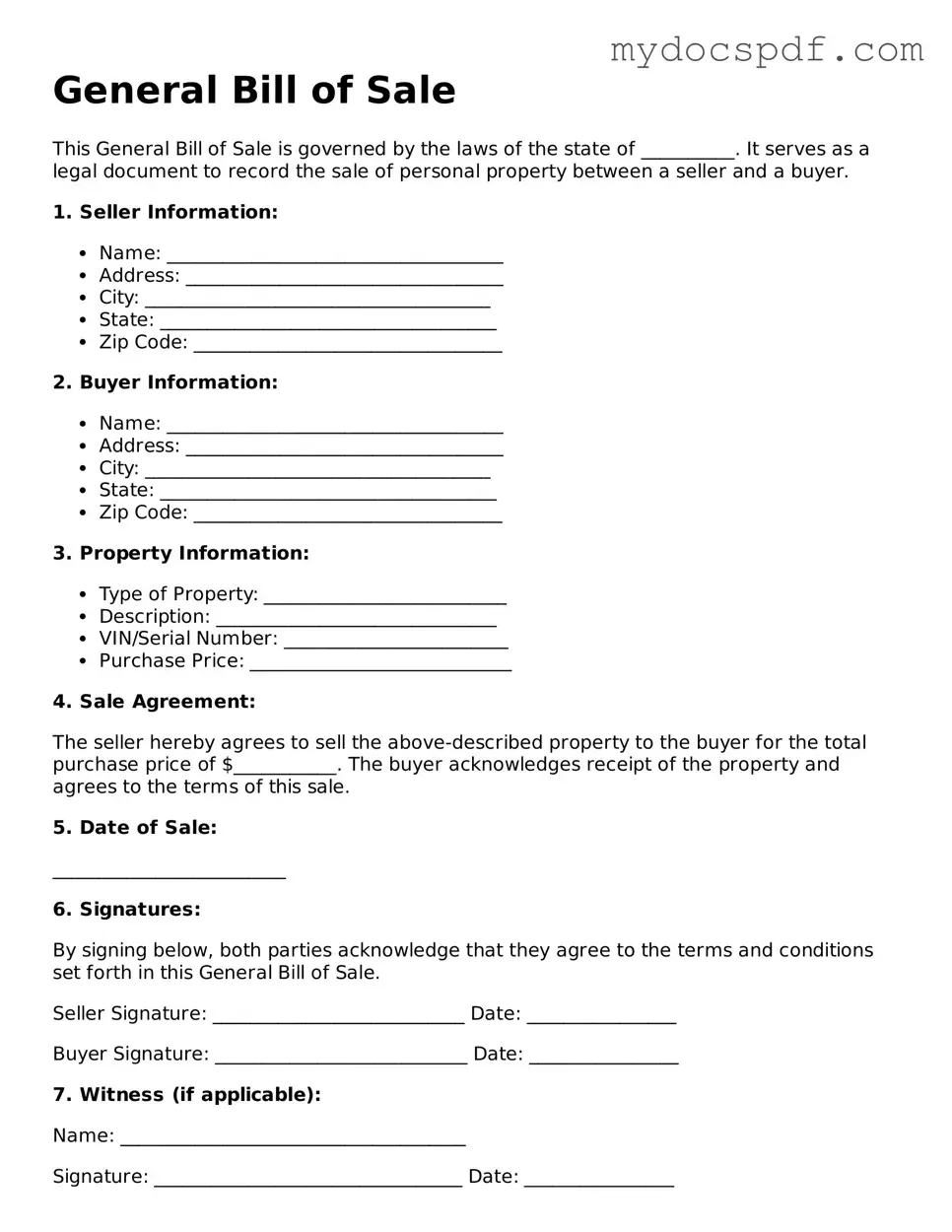General Bill of Sale
This General Bill of Sale is governed by the laws of the state of __________. It serves as a legal document to record the sale of personal property between a seller and a buyer.
1. Seller Information:
- Name: ____________________________________
- Address: __________________________________
- City: _____________________________________
- State: ____________________________________
- Zip Code: _________________________________
2. Buyer Information:
- Name: ____________________________________
- Address: __________________________________
- City: _____________________________________
- State: ____________________________________
- Zip Code: _________________________________
3. Property Information:
- Type of Property: __________________________
- Description: ______________________________
- VIN/Serial Number: ________________________
- Purchase Price: ____________________________
4. Sale Agreement:
The seller hereby agrees to sell the above-described property to the buyer for the total purchase price of $___________. The buyer acknowledges receipt of the property and agrees to the terms of this sale.
5. Date of Sale:
_________________________
6. Signatures:
By signing below, both parties acknowledge that they agree to the terms and conditions set forth in this General Bill of Sale.
Seller Signature: ___________________________ Date: ________________
Buyer Signature: ___________________________ Date: ________________
7. Witness (if applicable):
Name: _____________________________________
Signature: _________________________________ Date: ________________
